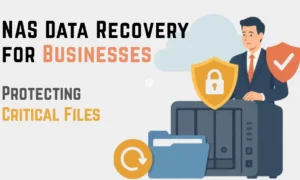In an increasingly digital world, the internet has become an integral part of our daily lives.
From online banking to social networking, the ways in which we interact and operate on the web are vast.
This means that the information we share online is more extensive than ever before. The importance of cyber security in safely surfing the internet cannot be overstated.
Effective cyber security protects not just our personal data but also the integrity of the online services we rely on. here we know the various aspects of online security, understanding threats, and adopting safe practices.
Online Security And Its Critical Role
Online security is the first line of defense against the myriad of threats that exist on the internet. It comprises the strategies, tools, and practices aimed at protecting internet users’ data and systems from unauthorized access, damage, or theft.
The landscape of online security is complex and ever-evolving, necessitating a multifaceted approach to stay ahead of potential threats.
Wifi Hotspot Security
Among the many components of online security, securing Wi-Fi hotspots is crucial. WiFi hotspots are ubiquitous, and often, people use public WiFi for convenience.
However, these open networks are a breeding ground for hackers who can easily intercept data transferred over the connection.
To protect oneself, it is essential to use a virtual private network (VPN) when connecting to public WiFi. A VPN encrypts the data being sent and received, making it difficult for anyone to intercept or decipher it.
Always ensure that the network you are connecting to is legitimate, as hackers sometimes create fake hotspots to lure unsuspecting users.
Password Management
Passwords are the keys to our digital lives. Unfortunately, many people tend to use weak passwords or reuse the same password across multiple platforms.
This practice can be catastrophic as it takes just one compromised password for a hacker to gain access to multiple accounts.
A strong password policy involves creating unique, complex passwords for different accounts. Employing a password manager can be a great way to generate and store these passwords securely.
It is also vital to enable multi-factor authentication whenever possible, adding an extra layer of security.
Securing Personal Devices
The devices we use smartphones, tablets, laptops are treasure troves of personal information.
Ensuring these devices are secure is paramount. Keep the software up to date, as manufacturers often release updates to patch security vulnerabilities. Installing a reputable antivirus program can help protect against malware.
Be vigilant about the apps and software you install, ensuring they come from trusted sources. Furthermore, in case your device is lost or stolen, ensure that you have set up a means to remotely wipe your data to prevent it from getting into the wrong hands.
Understanding The Threat Landscape
As technology advances, so do the techniques and tactics used by cybercriminals. Understanding the threat landscape is crucial in assessing the risks and knowing how to protect oneself effectively.
Phishing Scams
Phishing scams are attempts by scammers to trick you into sharing personal information or login credentials. Typically, this is done through emails that appear to be from legitimate sources but contain links to fake websites where your information is captured.
To safeguard against phishing, be skeptical of emails asking for sensitive information, especially if they instill a sense of urgency. Always verify the sender’s email address and hover over links to see the actual URL before clicking.
Ransomware Attacks
Ransomware attacks involve malware that encrypts a user’s files, with the attacker demanding a ransom to decrypt them. These attacks can be devastating, especially for businesses. To protect against ransomware, regularly backup your data in a secure location.
never download attachments or click on links from unknown sources, as these can often be the delivery method for ransomware.
Social Engineering Attacks
Social engineering attacks involve manipulating individuals into divulging confidential information.
Unlike phishing, which is usually conducted through electronic means, social engineering can occur in-person, over the phone, or through any form of communication.
To protect against social engineering, be cautious about the information you share, and validate the identity of individuals asking for sensitive information.
Adopting Safe Internet Practices
Once the threats are understood, adopting safe internet practices is the next step. This encompasses various habits and measures that can significantly reduce the risk of falling victim to cyber-attacks.
Regular Monitoring Of Online Accounts
Regularly monitoring your online accounts for any unauthorized or suspicious activity is crucial. If you notice anything unusual, take immediate action.
This could include changing your password, contacting the service provider, or, in cases of financial fraud, notifying your bank or credit card company.
Education And Awareness
Educating yourself and staying informed about the latest cyber threats and security practices is essential.
Participate in online webinars, follow reputable cyber security blogs, and encourage family members and colleagues to be aware of the importance of online safety.
Using Secure Connections
When browsing the internet, especially when entering sensitive information, ensure that the connection is secure.
Look for “https://” in the URL, which indicates that the data is encrypted. Avoid conducting sensitive transactions on websites that do not have this secure connection.
Final Thoughts
In today’s interconnected world, the stakes are high when it comes to securing our online presence.
The safety of personal information, financial assets, and digital identities hinges on diligent cybersecurity practices. From employing robust WiFi hotspot security, effective password management, and securing personal devices, to understanding and thwarting phishing, ransomware, and social engineering attacks, it is evident that a proactive approach is indispensable.
Safe internet practices such as regular monitoring of online accounts, continuous education, and using secure connections further fortify defenses. Through the harmonization of these elements, individuals and organizations can build a resilient shield against the multitude of cyber threats.
Remember, the fabric of online security is a shared responsibility and requires constant vigilance. By making cyber security a priority, society as a whole contributes to a safer and more reliable digital environment for everyone to thrive in.
































































